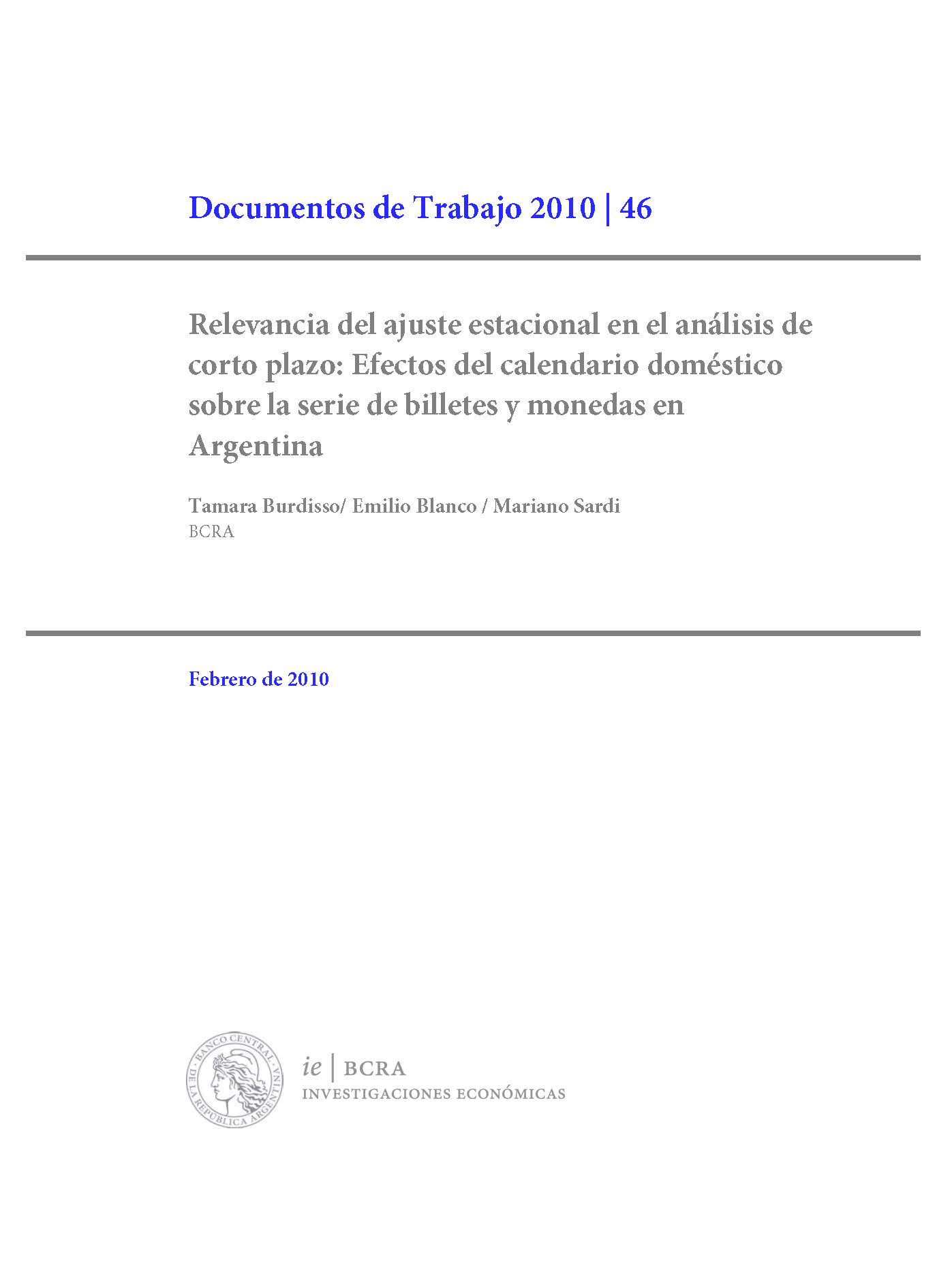Relevance of seasonal adjustment in short-term analysis: Effects of the domestic calendar on the series of banknotes and coins in Argentina
Working papers | 2010 | N 46
Keywords:
Seasonal adjustment, Calendar effect, Monetary aggregatesAbstract
The presence of seasonal fluctuations (regular behavior within the year, associated with climatic or institutional factors) invalidates monthly (quarterly) comparisons. In turn, interannual variations, depending on the comparison base used, may be very uninformative in the current analysis. The objective of this document is, on the one hand, to highlight the need to use series adjusted for seasonality and calendar effects in the analysis of the situation, and on the other hand to show an application of seasonal adjustment to the Banknotes and Coins (ByM) series of Argentina for the period 1992-2007. The main contribution of this work consists of this application with respect to seasonal adjustments made previously (not only for monetary series but also for Argentine real series), it consists of the fact that for the first time the domestic calendar is prepared and incorporated into the seasonal adjustment, in addition to exploit other seasonal adjustment capabilities such as the ad-hoc length of the seasonal and trend-cycle filters that allow for a more appropriate adjustment to the data observed in the Argentine economy. The contribution of the calendar effect to the explanation of the seasonal contribution turned out to be statistically significant although of relative economic importance with the exception of the months of December. In relation to the seasonal component, the main cause that gives rise to seasonality in ByM has not been modified during the analysis period. However, the same did not occur with the intensity of the seasonal component. ByM's seasonal factors suffered a significant reduction from 1997 to the present. The causes could be linked mainly to the process of banking and the incorporation of new technologies that have occurred in the economy since the late 90s. Probably the fact with the greatest impact on this process of banking has to do with the payment of salaries through salary accounts. Regarding the contribution of seasonality to the demand for BiM for the period 2003-2007, it is close to +/- 3 p.p. of the same, depending on whether it is a peak, that is, an increase in demand due to seasonality issues, or a valley (lower demand due to seasonal reasons).
JEL classification: C40, E50


